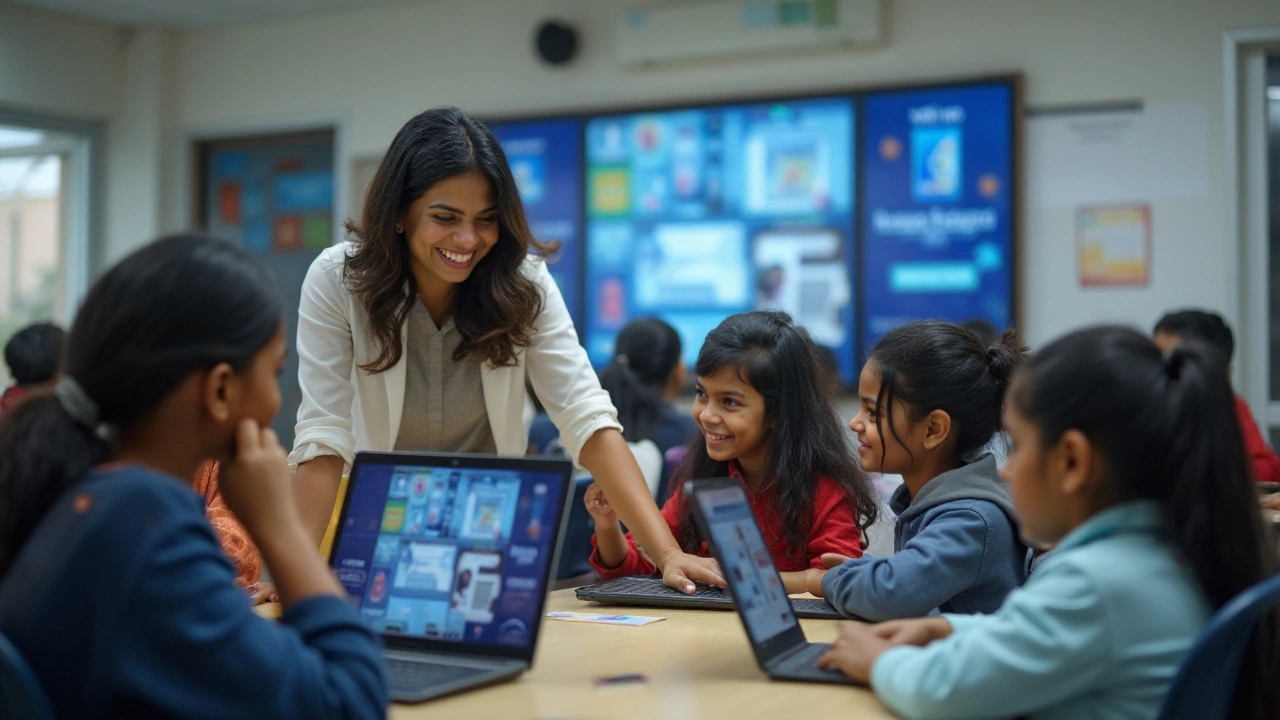As digital landscapes continue to transform the way we learn, e-learning platforms have become indispensable tools for learners across the globe. The effectiveness of these platforms rests on several key factors that work together to create a dynamic and supportive learning environment.
In this article, we will explore the essential characteristics that define successful digital platforms in the realm of online education. From intuitive user experience and engaging content to personalized learning paths and the adoption of novel technologies, each component plays a vital role in optimizing educational outcomes.
Join me in unraveling the intricacies of what truly makes an e-learning platform stand out and how these innovations are shaping the future of education.
User Experience Design
In the realm of digital platforms, especially those centered on e-learning, user experience design stands as a foundational pillar. A seamless, intuitive interface is not just icing on the cake—it’s often the backbone of educational success. When learners interact with a platform, the simplicity and clarity with which they can navigate content can drastically impact their motivation and engagement. Imagine a platform where courses are easily accessible, progress tracking is intuitive, and feedback loops are swift. This configuration empowers learners, making the path to education less of a maze and more of a guided tour.
One might wonder, what constitutes an ideal user interface for an e-learning platform? Think of it as crafting a story where each element needs to be in sync with the next. Factors like color theory, accessibility preferences, and responsive design are crucial, especially in catering to a global audience. A well-designed platform must accommodate not just different devices—from desktops to mobile phones—but also diverse demographics. Accessibility features like text-to-speech, keyboard shortcuts, and adjustable text sizes ensure inclusivity. Online education, after all, should be a universal right, not a privilege restricted by interface barriers.
Moreover, the integration of feedback mechanisms plays a crucial role. Platforms that allow students to send and receive feedback easily can foster a more interactive learning environment. By incorporating features such as surveys or quick-rate tools, educators and developers can tweak the user experience timely, iterating towards perfection. A quote by usability expert Jakob Nielsen says,
“Usability is about people and how they understand and use things, not about technology.”Such sentiments underline the need for a platform designed from the user's perspective, rather than one bound by technological limitations alone.
Balancing Simplicity and Depth
Creating a user-friendly digital platform often demands a delicate balance between simplicity and depth. If an interface is too simplistic, advanced learners may find it limiting. On the other hand, a platform overwhelmed with features could intimidate or confuse beginners. Therefore, a well-thought-out design often incorporates modular elements that users can toggle based on their needs. This adaptability ensures that the platform remains relevant to both novices and veterans of digital learning realms.
Let’s consider this in the context of platforms that incorporate gamified elements. These features, while meant to enhance engagement, should not overshadow the primary learning objectives. The goal is to enrich the educational experience without creating noise. Users should be able to dive deep into a topic, utilizing resources like assessments and discussions seamlessly. By strategically placing essential tools and minimizing clicks needed to perform tasks, design can significantly contribute to the user's learning receptiveness.
With the continuous advancements in technology, AI and machine learning are beginning to shape user experience profoundly. Imagine a system capable of learning your preferred study sessions, favorite subjects, and the pace at which you retain information. By utilizing AI to adapt content delivery to individual learners, platforms can offer personalized experiences that resonate more deeply. A nurturing environment, with subtle guidance rather than rigid dictates, builds a fertile ground for learners to bloom.

Engaging Content
In the expansive world of e-learning, content is king. It's not just about sharing information; it's about capturing attention and igniting curiosity. A good digital platform must transform typical learning material into an immersive experience, which is easier said than done. The nature of engaging content requires a blend of multimedia elements. Videos, interactive quizzes, animations, and podcasts can break the monotony of traditional text-based learning. These elements cater not only to different learning styles but also help to maintain the learner’s engagement over longer periods.
Understanding the psychological aspects of learning plays a crucial role too. Content should be segmented into manageable chunks, reducing cognitive overload and promoting better retention. Dubbed 'chunking,' this method aids in processing information more efficiently, leading to improved comprehension and recall. An e-learning platform that employs this strategy effectively can drastically improve its learning outcomes. Interwoven with storytelling, these mini-lessons can captivate learners and encourage deeper exploration of topics.
Engaging content also emphasizes the importance of context. When learners understand the relevance and application of what they're studying in real-life scenarios, the material becomes more meaningful. Interactivity, when executed well, fosters a two-way dialogue, making learners active participants in their educational journey. The use of simulations, scenario-based exercises, and real-world problem-solving activities encourages practical application of skills and knowledge, reinforcing the learning objectives.
"E-learning is a growing field. With the advent of technology, the possibilities of improving digital education are endless," remarked Jane Anderson, a leading expert in digital learning methodologies.
Feedback loops integrated within the platform also contribute to engagement. Immediate responses to quizzes or assignments can be motivating, providing learners with a clear understanding of their strengths and areas needing improvement. The digital nature of these platforms allows for sophisticated analytics to offer personalized feedback, fostering a more tailored learning experience. This dynamic interaction reinforces learning and keeps students motivated.
| Element | Impact on Learning |
|---|---|
| Videos | Visual engagement and better concept understanding |
| Quizzes | Reinforcement of knowledge through self-assessment |
| Storytelling | Contextual learning and retention improvement |
| Feedback | Personalized learning and motivation |
By understanding these key elements, digital platforms can craft engaging and effective e-learning experiences. The magic lies not just in what is taught, but in how it is delivered, making content a powerful tool in the educational arsenal.

Personalization and Accessibility
Embracing personalization in e-learning platforms is not just a fancy feature; it’s a necessity that caters to diverse learning needs and paces. Imagine a classroom where every student could learn at their own speed, focusing on what they need most. This is essentially what a digital platform offers through personalized learning paths. These paths adapt dynamically based on learner behavior, delivering content that aligns with their progress and understanding. Teachers and educators benefit from this design as it allows them to tailor their approach, focusing on the strengths and weaknesses of each learner.
The adaptability of these platforms stems from sophisticated algorithms and machine learning techniques. By analyzing patterns in a student's progress, a platform can determine which topics need reinforcement, which can be briefly reviewed, and which have been mastered. This method not only boosts engagement but also significantly enhances the overall learning outcome. An interesting fact is that personalized learning can lead to a 50% improvement in learning outcomes, according to a study by the Bill & Melinda Gates Foundation.
"Personalized learning provides the framework to ensure that every student advances upon demonstrating mastery, not seat time," noted the foundation.
Besides tailoring educational content, accessibility is another pillar that shapes the efficacy of e-learning platforms. Accessibility is about creating a learning environment that is inclusive, ensuring that individuals with disabilities have equal access to educational materials. An optimal platform goes beyond basic compliance with accessibility standards; it proactively incorporates tools such as screen readers and voice control functionality as integral elements of its design. The integration of closed captioning, alternative text for images, and customizable color-contrast settings are widely effective measures that make the digital learning experience more inclusive. Importantly, providing multilingual support expands an educational platform's reach, allowing students from around the globe to learn without language barriers.
Looking towards advancing technology, the role of augmented reality (AR) and virtual reality (VR) cannot go unmentioned. These technologies are not just novelties; they are reshaping how information is accessed and consumed, making education immersive and more engaging than traditional methods. In fact, 90% of students claimed VR and AR methods helped them understand complex subjects more effectively, according to a Stanford University study. Online education platforms that embrace such technologies set their content apart from others, providing unique learning experiences that combine both personalization and accessibility in profound ways.

Integration of Technology
The ongoing integration of technology into e-learning platforms is not just a passing trend; it is a fundamental shift in the educational landscape that offers significant advantages for both learners and educators. Cutting-edge technological advancements enable these platforms to be more than just digital replicas of traditional classrooms. Instead, they create fully immersive and interactive learning environments that cater to various learning styles and preferences.
One of the most powerful tools in the realm of digital platforms is artificial intelligence (AI). AI technologies facilitate personalized learning experiences by analyzing user data to tailor content and suggest personalized skill-building paths. For instance, systems can identify when a learner is struggling with a particular topic and adapt the complexity of exercises accordingly. Machine learning algorithms play a crucial role in creating these adaptive learning systems, making education more relevant and efficient.
Virtual reality (VR) and augmented reality (AR) are revolutionizing how learners visualize complex concepts and engage with the material. Through VR, learners can embark on virtual field trips to historical sites or explore the human body in 3D, providing a level of engagement that traditional textbooks cannot match. AR enhances real-world environments by layering additional information or graphics, thereby bridging the gap between theory and practice in real-time scenarios. A new study indicates that students retained 20% more information when AR tools were used to supplement traditional lectures.
Cloud technology has made it possible to store vast amounts of educational resources online, granting learners access to materials anytime, anywhere. This flexibility enables students to establish personalized study schedules and promotes continuous learning. Collaborative tools hosted on the cloud allow learners to engage with peers from around the world, nurturing a global learning community. These features support the democratization of education, opening up learning opportunities to anyone with an internet connection.
Data analytics and reporting tools help educators monitor progress efficiently, providing insights into learning patterns and identifying areas where students might need extra help. By collecting feedback on quizzes, assignments, and participation, these platforms can highlight areas of improvement and success. These insights empower instructors to craft lessons that resonate with their students, creating a productive and positive learning experience.
"Technology will not replace great teachers, but technology in the hands of great teachers can be transformational." - George Couros
Finally, mobile technology is crucial for ensuring accessibility in online education. Mobile-optimized platforms mean learning doesn't have to stop when you're away from your desk. Instead, you can take advantage of commutes, lunch breaks, and other downtime to engage with educational content. This continuous connectivity supports learning as an ongoing process rather than a confined part of the day.
